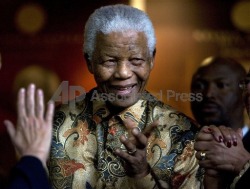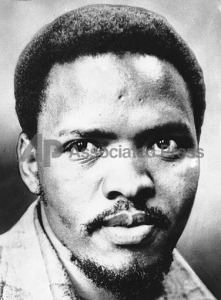South Africa: Struggle for Independence

Chloe Engle
Hjelmgren
World History
Period 7
5-8-09
South Africa: A Struggle For Independence
South Africa is the most powerful and advanced country on the African continent. It has the most stable legal system and financial systems in Africa and is a land of great beauty and natural riches such as diamonds, coal, gold, and uranium. However, South Africa’s history and dream of independence has been full of struggle, slavery, and political terrorism brought on by tribal wars and the greed of the British and Dutch colonialists who came to South Africa in the 19th century to make their fortunes at any cost. The struggle for independence is the story of the defeat of Apartheid (Ross). South Africa is a single country made up of many cultures. The African National Congress (ANC) sees itself as the core of the struggle to unify all of these cultures. Its motto “one nation, many cultures” strives to unite multiple cultures that speak eleven of the main languages spoken in South Africa. South Africa was colonized by Holland, France, and Britain. In 1652, Jan Van Riebeak; a Dutch citizen, founded a settlement in Table Bay. Many Europeans had tried to settle in South Africa before only to be driven out by the native people. The route to Asia around the Cape of Good Hope made many Europeans interested in the possibility of colonizing South Africa. The Dutch East India Company was able to establish shipping routes and became permanently established in South Africa. By 1869 the French has built a canal across the Isthmus of the Suez. In 1884 and 1885 several European countries met in Berlin to plan the division of the South African portion of Africa. By 1900 the British colonized Uganda, and 90% of Africa was divided by other European countries (Goodman).
The Dutch settlers who arrived in South Africa in the 1650’s were now farmers (called Boers) who also mined diamonds and other and other rich minerals becoming very wealthy. Britain’s Queen Victoria sponsored explorations into every part of Africa, and missionaries came to convert the natives and stop the racist practices of the Boers. In 1910 The South African Act created the union of South Africa. In 1912 the African National Congress was formed to fight for independence from its European oppressors.
For the next forty years the majority black populations of South Africa were fired from their jobs, stripped of their lands, and their right to vote. Black mine workers were paid twelve times less than whites. Great political unrest, violence, burning of villages, and segregation of blacks and whites led to boycotts and riots. To control the violence the white minority government created Apartheid, which segregated the non-white population from the white minority (Davis). Strict Apartheid laws controlled where people could live, go to school, work, and who they could interact with. Opposition leaders were beaten or jailed for striking or demonstrating against the rules. The word Apartheid is Afrikaan for “apartness”. South African’s were divided into four groups: Blacks, Whites, Asian, and Colored. The white minority controlled 80% of South African land, Blacks were stripped of their citizenship and women were pushed to the side.
Apartheid lasted form 1948 to 1994. During this violent struggle for freedom many answered the call to rebel and reclaim their nation. In1952, Nelson Mandela and Tambo opened the first black law firm in South Africa. In 1956 Nelson Mandela was charged with high treason but not found guilty. Never the less he was sentenced to life in prison for denouncing the cruelty of Apartheid. He became a hero for South Africans who carried out his work despite the threat of death and prison. Mandela was released from prison after twenty- eight years in 1990. He was awarded The Nobel Prize for peace in 1993 for his tireless work to free South Africa from racism and segregation. He was elected as the first black president of South Africa in a democratic election in 1994 (Mallaby). The struggle for independence in South Africa was costly. In 1960 over seventy people were killed in the Sharpeville massacre. In 1974 South Africa was expelled from the United Nations because of Apartheid. Two years later six-hundred students were brutally killed in the Soweto Township protest, and Steven Biko, a national leader against Apartheid, was killed while in jail. By 1990 white president De Klerk realized that the majority of blacks would continue to create violence and decided to lift the ban which outlawed the African National Congress. Four years later, Mandela was president and the struggle for independence in South Africa was over. Today, there is still great unrest, inequality, and power struggles between nations. Brutal leaders rule Rwanda, Somalia, and Zimbabwe and oppression and starvation are rising. The hard won freedom in South Africa is tested on a daily basis. We can only hope that there will be another Mandela, Biko, Tombo, and of course Bishop Desmond Tutu.
Annotated Bibliography
Brookes, Edgar. Apartheid: A Documentary Study of South Africa, New York: Barnes and Noble, 1968.
This book was helpful in tracing the history of modern South Africa. Brookes discusses how and why Apartheid changed the face and politics of South Africa.
Davis, Stephen M. Apartheid’s Rebels, New Haven: Yale University Press, 1987.
Davis’s book discusses the underground resistance movement during Apartheid. He spent six years with the ANC (African National Congress) who were the rebels who broke the censorship battles with the press.
Duke, Lynne. Mandela, Mobutu, and Me: A Newswoman’s African Journey, New York: Doubleday, 2003.
Washington Post correspondent Lynne Duke travelled in South Africa droning the 90’s recording the displacement of people to camps in Angola and the killing felids of Rwanda.
Goodman, David. Fault Lines: Journeys Into The New South Africa, Berkeley: University of California Press, 1999.
David Goodman is a freelance journalist who lived in South Africa at the height of Apartheid and witnessed the cruelty of the white politicians and the work of Mandela and Desmond Tutu. This book was helpful in giving an outsiders opinion of how the work of an imprisoned man could change Apartheid.
Mallaby, Sebastian. After Apartheid: The Future of South Africa, New York: Times Books, 1992.
Mallaby is the African correspondent for The Economist. His book was helpful in indentifying the tension that still exists between South Africa and other African nations.
Meredith, Martin. Diamonds, Gold and War: The British, The Boers and the Making of South Africa, New York: Simon and Schuster, 2007.
Meredith is a journalist and biographer. This book describes the fight for the gold and diamond riches in South Africa. It Is helpful because two men Cecil Rhodes and Paul Kruger are at the core of the struggle to claim huge chunks of land regardless of the tribes that live there and would never share in the white mans discoveries.
O’Malley, Padraig. Shades of Difference, New York: Viking, 2007
O’Malley tells the story of the most unlikely hero of the Apartheid movement, an Indian named Mac Maharaj. He was a leader of the liberation movement in South Africa who was tortured for his politics. This book demonstrates the international interest in Apartheid and its leaders.
Ross, Robert. A Concise History of South Africa, New York: Cambridge University Press, 1999.
Robert Ross is a professor in Holland who has traveled widely in South Africa. His book gives a good overview of the history of South Africa from about 1500 to the election of Nelson Mandela.
Welsh, Frank. South Africa: A Narrative History, New York: Kodanasha International, 1999.
Frank Welsh was a leading British banker at Grindlays Bank in South Africa and India. This book discusses the fact that South Africa now has a well-developed financial and legal system. It gives a helpful history of how the economy of South Africa works.

